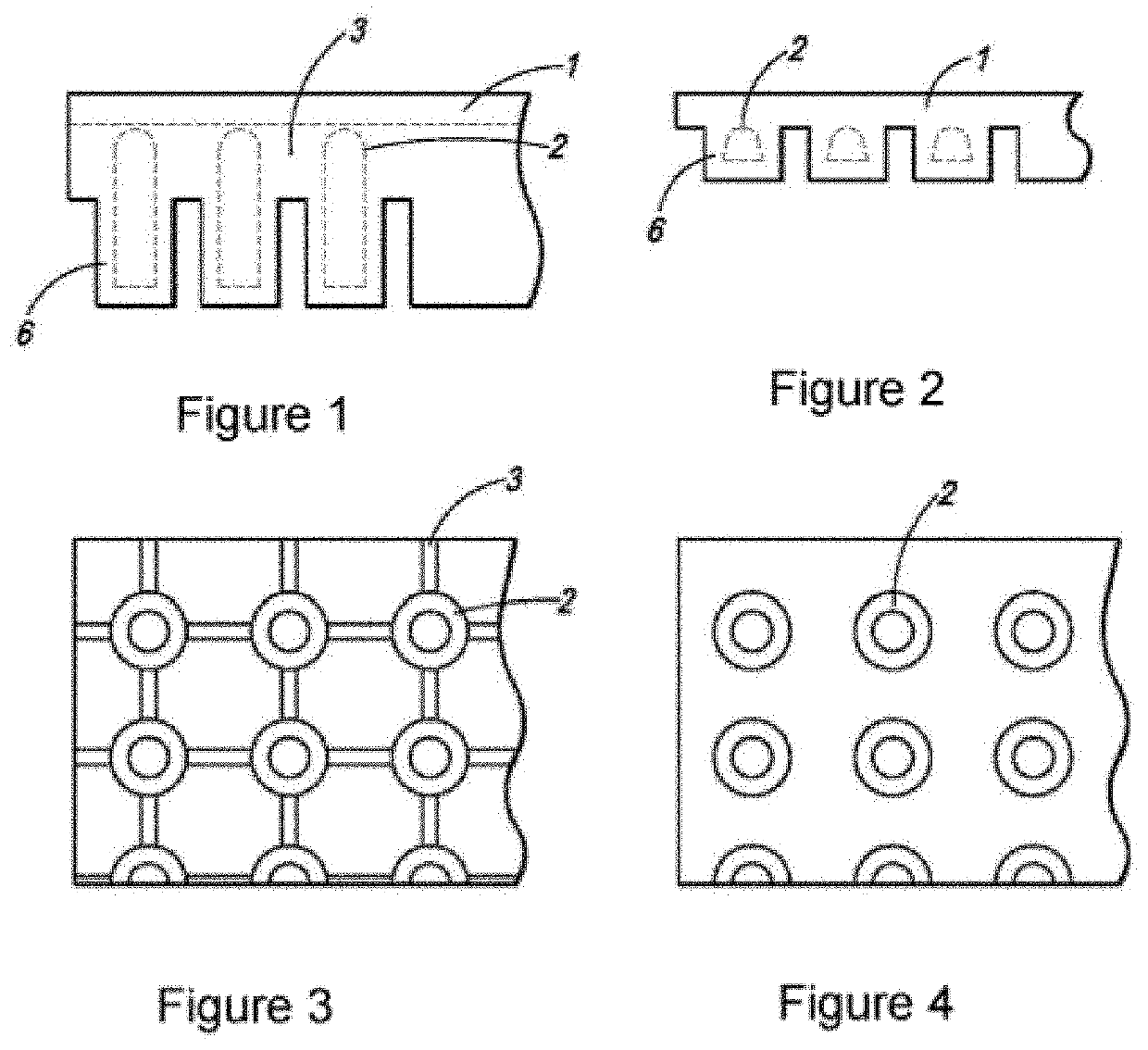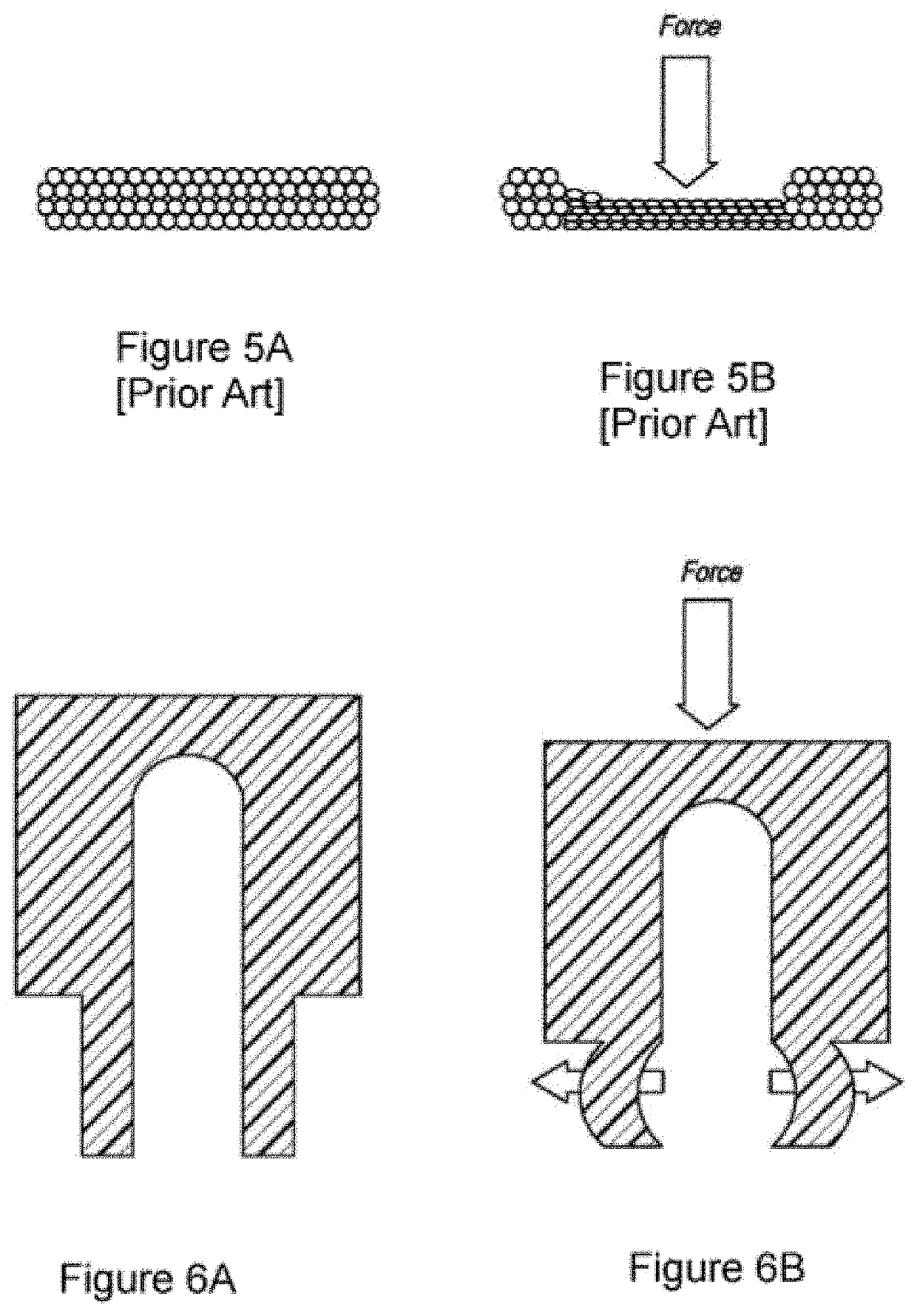Impact Absorbing Safety Matting System with Elastomeric Sub-surface Structure
a safety matting and sub-surface structure technology, applied in the field of attenuating applied force and absorbing impact energy, can solve the problems of many problems of most conventional matting systems, the least available cushioning capacity the hardness of conventional impact attenuating structures, etc., to achieve stable work surface, prevent slippage, and stabilize foot
- Summary
- Abstract
- Description
- Claims
- Application Information
AI Technical Summary
Benefits of technology
Problems solved by technology
Method used
Image
Examples
Embodiment Construction
[0043]Turning now to the drawings, the invention will be described in a preferred embodiment by reference to the numerals of the drawing figures wherein like numbers indicate like parts.
[0044]Reference throughout this specification to “one embodiment” or “an embodiment” means that a particular feature, structure, or characteristic described in connection with the embodiment is included in at least one embodiment of the invention. Thus, the appearances of the phrases “in one embodiment” or “in an embodiment” in various places throughout this specification are not necessarily all referring to the same embodiment. Furthermore, the particular features, structures, or characteristics may be combined in any suitable manner in one or more embodiments.
[0045]Reference throughout this specification to a “column” refers to a tubular shafted support structure, typically having a cylindrical or polygonal shaft and two shaft ends. Similarly, references throughout this specification to a “cylinder...
PUM
| Property | Measurement | Unit |
|---|---|---|
| wall draft angle | aaaaa | aaaaa |
| wall draft angle | aaaaa | aaaaa |
| heights | aaaaa | aaaaa |
Abstract
Description
Claims
Application Information
 Login to View More
Login to View More - R&D
- Intellectual Property
- Life Sciences
- Materials
- Tech Scout
- Unparalleled Data Quality
- Higher Quality Content
- 60% Fewer Hallucinations
Browse by: Latest US Patents, China's latest patents, Technical Efficacy Thesaurus, Application Domain, Technology Topic, Popular Technical Reports.
© 2025 PatSnap. All rights reserved.Legal|Privacy policy|Modern Slavery Act Transparency Statement|Sitemap|About US| Contact US: help@patsnap.com



